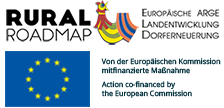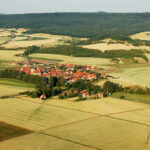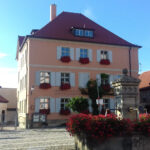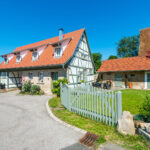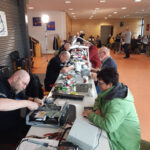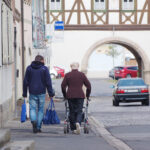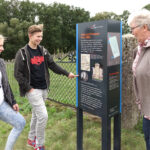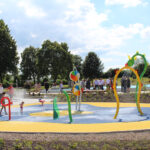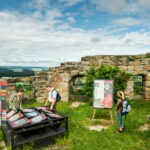Hofheimer Land, Bavaria, Germany
“Together we are stronger” – under this motto, the intercommunal association Allianz Hofheimer Land e.V. with its seven member communities has been pooling its strengths since 2008. The municipalities Aidhausen, Bundorf, Ermershausen and Riedbach, the market towns Burgpreppach and Maroldsweisach and the city Hofheim, with their combined population of 15.000 spread across 53 villages, joined forces and laid the foundation for an exemplary development which can be considered trend-setting for European rural areas. The alliance’s municipalities are located in Lower Franconian Haßbergen, on the Bavarian-Thuringian border between the cities Bamberg, Coburg and Schweinfurt. Würzburg is around 60 kilometers away.
The initial situation at the beginning of the process was characterized by a number of challenging conditions that needed to be overcome: decades as an area adjacent to the Soviet zone, along with massive amounts of vacant buildings and the loss of social and other infrastructures in the village centers. The municipalities quickly came to realize that these enormous structural problems could not be overcome through destructive competition, but rather through could only be solved through collaboration.
Development goals within the integrative rural development concept were clearly formulate, with an emphasis on the revitalization of the village centers and systematic structural, functional and social development. An inquiry into the amount of vacant buildings in all alliance communes, a designated funding program for the utilization of existing building structures, free consultations with architects as well as an online real estate platform were important and efficient first steps. To this day, 340 vacancies were revitalized through restoration, not only reinvigorating the village centers, but also saving up to 45 hectares of land that would have needed to be designated for new constructions.
This exemplary use of the resource land, which included redesignating properties that had already been deemed building plots, is considered a key factor for the sustainable development of the region. It should also be noted that local craftsman and architecture firms were systematically involved in the restoration of the structures, following the logic of the campaign “Ich lass die Kohle im Dorf” (“I keep the money in the village”). Additionally, the revitalization of buildings was used to create affordable housing and various new housing forms.
An indispensable aspect of the successful development process remains the inclusion and education of the population in regards to sustainable development processes. Future workshops were used to continuously increase people’s awareness of the necessary local development and to find common strategies to implement projects. Their immense sense of responsibility is visible in the sheer amount of voluntary services provided by communes and individuals, and also in their integration efforts. Without this, the implementation of numerous measures would have been impossible for the financially weak communes. An example would be the 22 interconnected village community houses that function as a think tank and also provide essential locations for the villages’ social life and integration, such as co-working-spaces and repair-cafés.
Numerous measures document the pioneering activities concerning the motto of the competition “Local Answers to Global Challenges.” Some examples include the project “Green Classroom” (environmental education in cooperation with the forest administration and the German Forest Protection Association SDW), the sustainable forest management of communal and private forests (PEFC certification) made possible only by the voluntary land trade among numerous forest owners initiated by the alliance, water protection through minimal use of fertilizers in agricultural spaces, the creation of forest biotopes and the connection between agriculture and renewable energy production. This not only created local chains of revenue, but also drastically reduced carbon-emissions. The reconstruction of the sewage plant to increase its energy production should also be mentioned as a prime example.
Furthermore, the alliance focuses on mobility for the population, local supply and location-appropriate employment opportunities and provides busses, ride-share benches, a platform for ridesharing, several car-sharing projects, an extensive bicycle path network and an e-bike rental, thereby ensuring the accessibility of decentralized village stores with local sales.
The participation of all people in the region and sociocultural quality within the Hofheimer Land is also a priority. The coordination center for new citizens, the friendship circle “Asyl-Hofheim e.V.”, various music festivals, copious exhibitions and events as well as several publications are some impressive examples of projects that, as a whole, reflect diversity, openness and sensibility for the needs of people of all ages, situations and interests. The creation and maintenance of numerous leisure, educational and wellness establishment for a variety of needs and interests is also noteworthy.
In summary, the activities and measures implemented by the alliance municipalities demonstrate their ability to recognize the diversity of their inhabitants, who come from all parts of Germany, Europe and the World, as an enormous potential for development and successfully foster and use it to improve the living conditions for their communities. The clear development strategy, the coordinated planning processes, the culture of participation and not least the unifying objective to create a prosperous future for the next generations show that Hofheimer Land finds exceptional local answers to global challenges.
Evaluated: 2020
